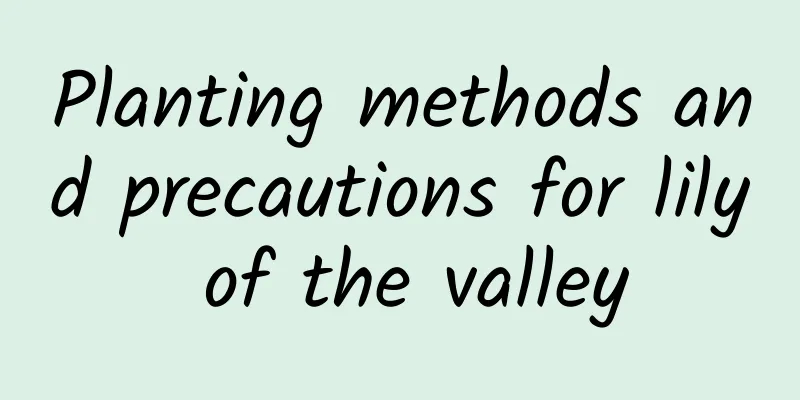Planting methods and precautions for lily of the valley

|
To plant lily of the valley, you need to use the division method. In spring and autumn, separate the small bulbs from the rhizomes and plant them directly in a pre-prepared pot. Cover them with a layer of fine soil. After planting, move the plants to a cool and ventilated environment, wait for the bulbs to sprout, and then move them to a place with good light. Growth habits of lily of the valleyWhen planting lily of the valley, you need to use loose, breathable, nutrient-rich, alkaline humus soil, and mix it with fine sand to improve the air permeability of the soil. If the soil is light in color, you can add decomposed farmyard manure to improve the soil fertility and create a fertile growth environment for lily of the valley. How to grow lily of the valley1. Soil To choose a more suitable cultivation environment, you need to select loose, fertile soil with strong drainage ability and a slightly acidic pH value. 2. Planting Divide the lily of the valley bulbs into small pieces, each of which should have a bud on it. Then bury the small pieces of lily of the valley in the soil and cover them with a thin layer of soil. Precautions for cultivating lily of the valley1. Environment Lily of the valley can be grown in a mixture of leaf mold, garden soil and river sand. The lily of the valley should be placed in a semi-shaded place for maintenance, which is conducive to the growth of the lily of the valley. 2. Fertilization Lily of the valley is a fertilizer-loving plant. If insufficient fertilizer is applied, it will directly affect the flowering of lily of the valley. Fertilizer can be applied every 7 days or every 10 days. Also, when planting lily of the valley, a certain amount of base fertilizer needs to be added. 3. Moisture Lily of the valley has relatively high requirements for water. The soil in the pot needs to be kept moist at all times. It cannot lack water, but it cannot be watered excessively, otherwise there will be too much water accumulation. |
<<: Ginkgo bonsai cultivation methods and precautions
>>: Is the Bougainvillea cajata blooming frequently?
Recommend
Should I water the repotted Clivia?
1. Should I water the repotted Clivia? It is best...
How to change the soil for succulent plants and what should you pay attention to?
Now succulents have become the darling of the gre...
When and how to repot Jade Leaf
Jade Plant is a perennial evergreen succulent pla...
The effect of the queen flower
1. Cough relief The queen flower is cold in natur...
Cultivation methods and maintenance matters of old fuchsia piles
How to grow fuchsia into an old tree Fuchsia is a...
What is the difference between pineapple and pineapple? Are pineapple and pineapple the same?
1. Different leaf edges In terms of appearance, t...
The efficacy and function of shepherd's purse
1. Anti-cancer Shepherd's purse is rich in vi...
Can durian be planted in this season?
Durian is a tropical fruit that has specific requ...
The efficacy and function of Cordyceps flower
1. Prevent blood clots Eating more Cordyceps flow...
Can water hyacinth be planted in soil?
Can water hyacinth be planted in the soil? Water ...
What soil is best for growing cyclamen?
1. Specific requirements (1) The first point is l...
What flowers are suitable for growing in Chenzhou? What are the city flowers and trees?
1. Climate characteristics of Chenzhou Chenzhou h...
Which Clivia is easy to grow into a group of orchids (with cultivation methods and precautions)
1. Which type of orchid is easy to grow in groups...
Orchid hasn’t bloomed for 3 years? The orchid-growing master teaches you this trick, how to grow top-quality and high-priced orchids in one month!
Potting soil "To raise fish, you need to tak...
Ever since she started growing flowers, she has developed a strange disease: everything she sees looks like a flower pot!
Oil barrel plastic bottle, pig family portrait fl...









